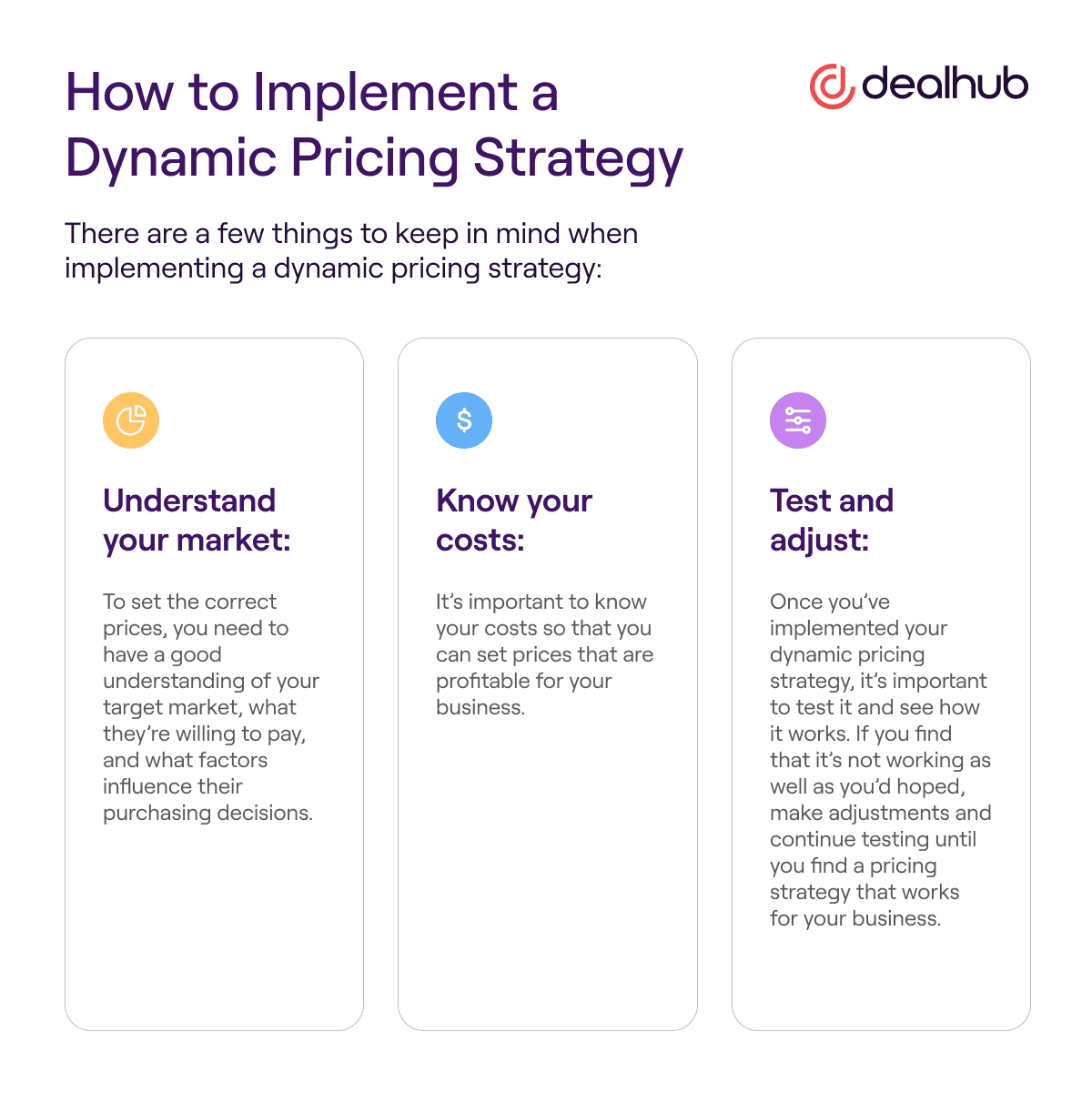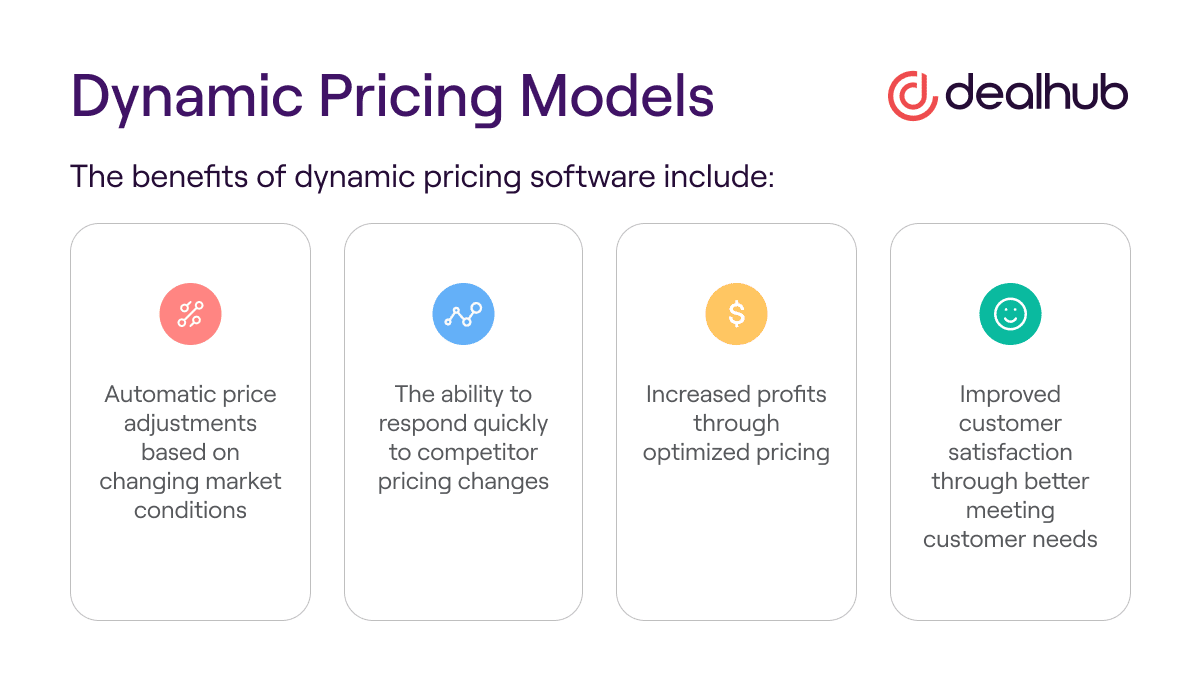Dynamic Pricing
Table of Contents
What is Dynamic Pricing?
Dynamic pricing is a pricing strategy that charges customers different prices for the same good or service based on fluctuations in market demand. Businesses using dynamic pricing change their prices in real time according to changes in supply and demand. This type of pricing can be found in industries as varied as transportation, energy, groceries, and event tickets.
Dynamic pricing is not a new concept – businesses have been using it for centuries. For example, grocers have always charged higher prices for items in season and in demand, while discounts are used to move items that are overstocked.
With the advent of technology and the trend toward digital pricing transformation, dynamic pricing has become more widespread and sophisticated. Businesses can now use data analytics to track customer demand and make pricing decisions in real time. This has led to a new wave of dynamic pricing strategies, such as surge pricing and flash sales.
Dynamic pricing can be controversial, as it can be perceived as unfair or exploitative. However, dynamic pricing can also be a win-win for businesses and consumers, as it can help businesses optimize their profits and customers find the best deals. When dynamic pricing is used in a transparent and fair way, it can be a powerful tool for businesses and consumers alike.
Synonyms
- Surge pricing
- Demand pricing
- Real-time pricing
- Time-based pricing
- Situational pricing
- Flexible pricing
How Dynamic Pricing Works
Dynamic pricing is based on the principle of supply and demand. When demand is high, prices are typically high as well. When demand is low, prices usually drop. Dynamic pricing takes this basic economic principle and applies it in real time so prices can fluctuate based on the current level of demand. Dynamic pricing is a common pricing strategy in industries where demand varies significantly from time to time, such as air travel, hotel rooms, and event tickets.
Dynamic pricing can be used in many different ways. For example, businesses may charge different prices for the same product or service at different times of day or week, depending on when demand is highest. They may also offer discounts or promotions to boost sales during slow periods.
Benefits of Dynamic Pricing
Dynamic pricing has become more prevalent as businesses look for ways to increase profits and respond to competition. Dynamic pricing is a pricing strategy that offers many benefits for businesses. Businesses can set prices based on demand to improve their profitability, increase sales, and reduce costs. Additionally, dynamic pricing can help companies compete more effectively by responding quickly to changes in the market. There are many benefits of dynamic pricing, including:
- Improved profitability: Businesses can maximize their profits by setting prices based on demand. Dynamic pricing also allows businesses to react quickly to changes in the market, which can help them avoid losses.
- Increased sales: Dynamic pricing can encourage customers to buy items they may not have purchased at a fixed price. This is because dynamic prices can be lower than the original price, making products more affordable for customers.
- Increased customer satisfaction: Dynamic pricing allows businesses to meet the needs of their customers by giving them the ability to pay what they feel is fair for a product or service. Dynamic pricing can also help businesses offer discounts to customers who are willing to buy in bulk or at off-peak times.
- Reduced costs: Dynamic pricing can help businesses reduce costs by avoiding the need to offer discounts or promotions. This is because dynamic prices can be set to reflect the current market conditions, which can help businesses save money.
- Improved competitiveness: Businesses can compete more effectively by responding quickly to changes in the market. This is because businesses that use dynamic pricing can adjust their prices in real-time, giving them a significant advantage over static pricing.
Who Uses Dynamic Pricing
Businesses using dynamic pricing can change prices multiple times a day, in real-time, to react to changes in demand. This data-driven price optimization strategy is commonly used in industries with a lot of competition and where prices often fluctuate.
Dynamic pricing can be a very effective way to increase sales and margins, but it can also be risky. If dynamic pricing is not done carefully, it can alienate customers and damage relationships with suppliers. When dynamic pricing is done well, it can be a win-win for both businesses and customers. Customers benefit from getting the products they want at a fair price, while businesses increase sales and margins.
The following are some industries where dynamic pricing is commonly used:
- Airline industry: Airlines have used dynamic pricing for years to maximize revenue. Flight prices can fluctuate multiple times a day based on factors such as demand, time of day, and length of the flight.
- Hotel industry: Hotels also use dynamic pricing to fill rooms during slow periods and increase rates during busy times. Rates can fluctuate based on seasonality, demand, and location.
- Event ticketing industry: Event ticket prices can fluctuate based on demand, time of day, and seat location. Dynamic pricing is commonly used for tickets to sporting events, concerts, and theatre performances.
- Retail industry: Retailers increasingly use dynamic pricing to compete with eCommerce businesses. Product prices can fluctuate based on demand, time of day, and location.
How to Implement a Dynamic Pricing Strategy
Dynamic pricing is a powerful sales enablement tool that can help businesses stay competitive, optimize revenue and profit margins, build customer loyalty, and manage risk.
There are a few things to keep in mind when implementing a dynamic pricing strategy:
- Understand your market: To set the correct prices, you need to have a good understanding of your target market, what they’re willing to pay, and what factors influence their purchasing decisions.
- Know your costs: It’s important to know your costs so that you can set prices that are profitable for your business.
- Test and adjust: Once you’ve implemented your dynamic pricing strategy, it’s important to test it and see how it works. If you find that it’s not working as well as you’d hoped, make adjustments and continue testing until you find a pricing strategy that works for your business.

Dynamic Pricing Models
There are four main dynamic pricing models or strategies that businesses can use to increase sales and revenue:
- Price skimming: This strategy involves setting high prices for a new product or service to maximize revenue from early adopters.
- Penetration pricing: This strategy involves setting low prices for a new product or service to attract as many customers as possible.
- Price discrimination: This strategy involves charging different prices to different customer groups based on location, time of purchase, or demographics.
- Bundling: This strategy involves packaging products or services at a discounted price.
Businesses can use these strategies alone or in combination to tailor their dynamic pricing approach to their specific needs.

Use Dynamic Pricing Software
Dynamic pricing software is a tool that relies on dynamic pricing algorithms or a dynamic pricing engine to enable businesses to automatically adjust their prices in real-time, based on a variety of factors. CRM and CPQ software running on cloud platforms, backed by AI technologies, combines dynamic pricing algorithms with cutting-edge sales automation to enable sales teams to stay competitive, maximize profits, and better meet your customers’ needs.
The benefits of dynamic pricing software include:
- Automatic price adjustments based on changing market conditions
- The ability to respond quickly to competitor pricing changes
- Increased profits through optimized pricing
- Improved customer satisfaction through better meeting customer needs
People Also Ask
When should a company use dynamic pricing?
Dynamic pricing can be a valuable tool for businesses that want to maximize profits and respond quickly to changes in the market, as well as those that value creating a customized buying experience.
Dynamic pricing can also help businesses clear inventory quickly, as prices can be reduced to encourage sales. Dynamic pricing can work well for businesses with perishable goods, such as food or flowers, as these goods need to be sold quickly before they go bad.
Dynamic pricing can also be effective for businesses with high-demand products or services, such as concert tickets or hotel rooms.
By using dynamic pricing, these businesses can increase prices when current market demand is high and decrease costs when demand is low, which can help maximize profits.
What are the advantages and disadvantages of dynamic pricing?
Dynamic pricing has many advantages, including increased revenue, improved customer satisfaction, and greater flexibility.
However, dynamic pricing also has some disadvantages, such as the potential for price gouging, negative customer perceptions, and challenges with implementing a dynamic pricing strategy.
Is dynamic pricing fair?
There has been much debate over whether or not dynamic pricing is fair. On the one hand, some argue that it is a way for businesses to take advantage of consumers during times of high demand.
On the other hand, others argue that dynamic pricing is simply a way to reflect a product’s or service’s actual value and that it is ultimately up to the consumer to decide whether or not they are willing to pay the higher price.

